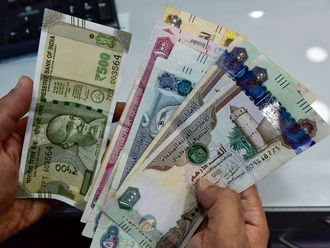Corporate failures caused by the financial crisis have brought to the fore the issue of counterparty risk.
In the Gulf, credit risk is normally not strongly evaluated due to the lack of data. Also, there is a concentration of risk among major banks which leads to spillover risk in cases of failure.
With the UAE aiming to achieve emerging market status, one of the local exchanges, Nasdaq Dubai, is taking a leading role in developing a local derivatives platform. Derivatives, if managed properly can play an important role in mitigating risk and can also boost liquidity by attracting international institutional investors to the local markets.
Structural challenges still need to be overcome, but the UAE is forging ahead as a trail blazer in this respect.
Question: What is counterparty risk?
Answer: In derivatives contracts, parties agree to exchange cash flows based on the price of an underlying asset. A corn farmer wishing to lock in the price he receives for his crop, for example, may sell a futures contract that will pay him more as the price of his corn falls, locking in his financial outcome.
Counterparty risk is the risk that the hedger or speculator who buys the futures contract from the farmer fails to pay if the price of corn falls.
In an organised derivative securities exchange, a clearinghouse acts as an intermediary, serving as the counterparty to each side of a transaction and insuring performance if one party fails to perform on its contractual obligations. This arrangement allows investors to trade with confidence.
Why is a clearing house a less risky counterparty?
As an intermediary, the exchange-based clearing house has offsetting long and short positions managing its net exposure to the value of the contract to near zero. Its main exposure is that a party may default on their obligations. To protect against these losses, the clearinghouse monitors its member's positions each day and collects small fees on each trade for capitalisation.
It also requires trading partners to meet certain capital requirements and to deposit funds to insure contract performance. As security prices fluctuate, counterparties are required to realise their losses on a daily basis or risk having their positions liquidated, a process called mark-to-market.
This arrangement requires contracts to be standardised and actively traded so that clearing houses have the necessary information to mark-to-market.
How is the over-the-counter (OTC) derivative market different?
In OTC markets, trades are negotiated between counterparties such as broker dealers, corporations and hedge funds. The negotiation process allows parties to customise contracts, which prevents them from being traded on organised exchanges.
Without a clearing house, counterparties assume each other's credit risk. Many would suggest these differences mean there is really not a market, simply a series of private negotiations.
Assessing the risk of a particular counterparty is complicated by the opaqueness of their financial position.
Although large financial institutions may publish quarterly or semi-annual financial statements, estimating the risk of their positions from that information is challenging.
How is counterparty risk related to the current financial market instability?
When a large party defaults, it can jeopardise the financial strength of their counterparties, which in turn increases the risk that their default and so on. Because the notional value of derivatives markets dwarfs the cash markets (sometime by more than ten times), this cascade effect can cripple the financial system.
OTC derivatives markets absorb small idiosyncratic defaults quite well. The impact of major counterparty defaults is less clear. Lehman Brothers was a significant player in derivatives, but it was not one of the largest counterparties.
AIG is one of the largest counterparties and was taken under the wing of the US Treasury out of fear of the systemic effects of a default.
Domluke Da Silva is CFA Executive Committee member of the local CFA Emirates Society and Stephen M. Horan is the head of professional education content and private wealth at CFA Institute.












